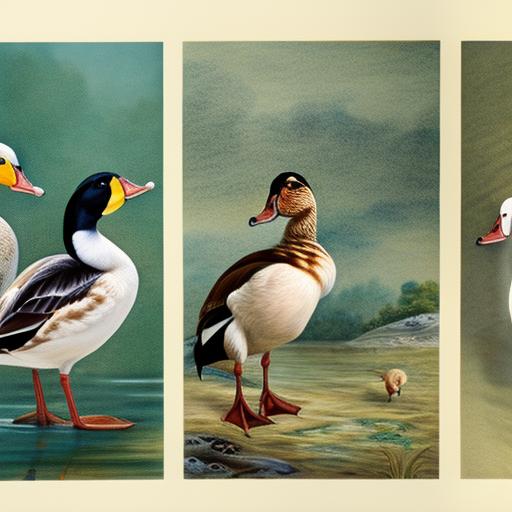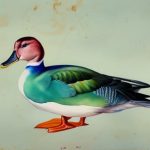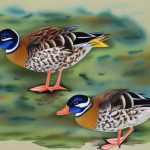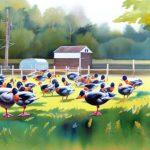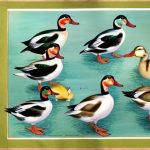Duck breeds come in a wide variety of shapes, sizes, and colors, each with its own unique characteristics. Understanding these differences is essential for anyone interested in raising or identifying duck breeds. One of the key characteristics to consider is the size of the duck breed. Some breeds, such as the Pekin duck, are known for their large size, while others, like the Call duck, are much smaller in stature. Additionally, body shape is another important characteristic to consider. Some breeds have a more upright posture, while others have a more rounded or compact body shape.
Another important characteristic to consider when understanding duck breeds is their plumage and coloration. Different breeds of ducks can have a wide range of plumage colors and patterns, from the classic white feathers of the Pekin duck to the striking blue and black markings of the Swedish duck. Understanding these differences can help in identifying and appreciating the diversity of duck breeds. Additionally, behavioral traits and temperament are important characteristics to consider when understanding duck breeds. Some breeds are known for being more docile and friendly, while others may be more skittish or independent. Understanding these traits can help in choosing the right breed for a specific purpose, whether it be for egg production, meat, or as a pet.
Key Takeaways
- Duck breeds vary in size, body shape, plumage, coloration, behavior, temperament, and vocalizations.
- Size and body shape are important factors in identifying different duck breeds.
- Plumage and coloration can be used to distinguish between various duck breeds.
- Behavioral traits and temperament can also help in identifying different duck breeds.
- Unique vocalizations and leg bands are additional tools for identifying duck breeds, and seeking expert advice and resources can be helpful in this process.
Identifying Duck Breeds by Size and Body Shape
When it comes to identifying duck breeds, size and body shape are two key factors to consider. Ducks come in a wide range of sizes, from small bantam breeds like the Call duck to larger breeds like the Pekin duck. Size can be a helpful indicator when trying to identify a specific breed, as it can narrow down the options and make the identification process easier. In addition to size, body shape is another important characteristic to consider when identifying duck breeds. Some breeds have a more upright posture with a long neck and slender body, while others have a more rounded or compact body shape. Understanding these differences can help in distinguishing between different breeds and identifying them accurately.
Furthermore, body shape can also provide clues about the purpose of the breed. For example, breeds with a more upright posture and long necks may be better suited for foraging in water, while breeds with a more compact body shape may be better for meat production. By paying attention to these physical characteristics, it becomes easier to identify and appreciate the diversity of duck breeds.
Recognizing Different Duck Breeds by Their Plumage and Coloration
Plumage and coloration are important characteristics when it comes to recognizing different duck breeds. Ducks come in a wide variety of colors and patterns, from solid white feathers to intricate markings in shades of blue, black, and brown. Understanding these differences can help in identifying and appreciating the unique beauty of each breed. For example, the Pekin duck is known for its classic white feathers, while the Rouen duck has a striking combination of dark green and brown plumage.
In addition to coloration, plumage patterns can also provide clues about a duck breed’s origins and characteristics. For example, some breeds have distinct markings on their feathers that are unique to their breed, such as the bibbed pattern of the Swedish duck or the distinctive crest on the head of the Crested duck. By paying attention to these details, it becomes easier to recognize and identify different duck breeds based on their plumage and coloration.
Observing Duck Breeds’ Behavioral Traits and Temperament
Behavioral traits and temperament are important factors to consider when identifying duck breeds. Different breeds of ducks can exhibit a wide range of behaviors, from being docile and friendly to being more skittish or independent. Understanding these traits can help in identifying and choosing the right breed for a specific purpose, whether it be for egg production, meat, or as a pet. For example, some breeds are known for their calm and friendly nature, making them ideal for keeping as pets or foraging in backyard ponds. On the other hand, some breeds may be more independent and less social, making them better suited for free-range environments.
Additionally, observing behavioral traits can also provide clues about a duck breed’s natural instincts and abilities. For example, some breeds may have a strong instinct for foraging in water or have a natural ability for flying long distances. By paying attention to these behavioral traits and temperament, it becomes easier to identify and appreciate the unique characteristics of different duck breeds.
Identifying Duck Breeds by Their Unique Vocalizations
Another way to identify duck breeds is by their unique vocalizations. Different breeds of ducks have distinct sounds that they use to communicate with each other and express their emotions. By paying attention to these vocalizations, it becomes easier to recognize and identify different duck breeds based on their sounds. For example, some breeds may have a loud and distinctive quack, while others may have a softer or more melodic call.
In addition to quacking, ducks also use other vocalizations such as grunts, whistles, and hisses to communicate with each other. By familiarizing oneself with these different sounds, it becomes easier to identify and appreciate the diversity of vocalizations among different duck breeds. Furthermore, understanding these vocalizations can also provide insights into a duck breed’s behavior and temperament, as certain vocalizations may be associated with specific emotions or actions.
Using Leg Bands and Other Markings to Identify Duck Breeds
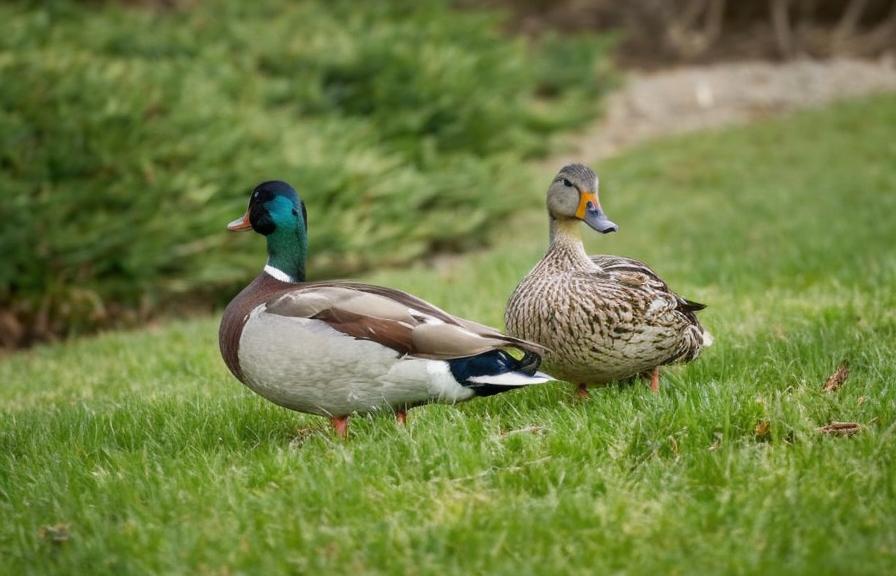
Leg bands and other markings can be useful tools for identifying duck breeds. Leg bands are small rings that are placed around a duck’s leg for identification purposes. These bands often have unique numbers or colors that can help in distinguishing between different breeds or individual ducks within a breed. By paying attention to these leg bands and other markings, it becomes easier to identify and keep track of different duck breeds.
In addition to leg bands, other markings such as feather patterns, eye color, and bill color can also provide clues about a duck breed’s identity. For example, some breeds have distinct markings on their feathers that are unique to their breed, while others may have specific eye or bill colors that are characteristic of their breed. By paying attention to these details, it becomes easier to identify and appreciate the unique markings that distinguish different duck breeds.
Seeking Expert Advice and Resources for Identifying Duck Breeds
For those who are new to identifying duck breeds, seeking expert advice and resources can be invaluable. There are many books, websites, and forums dedicated to raising and identifying different duck breeds that can provide valuable information and guidance. Additionally, reaching out to experienced duck breeders or joining local poultry clubs can provide opportunities to learn from others who have expertise in identifying duck breeds.
Furthermore, attending poultry shows and exhibitions can also be a great way to see different duck breeds up close and learn from experienced breeders. These events often feature educational seminars and breed showcases that can provide valuable insights into the characteristics and traits of different duck breeds. By seeking expert advice and resources, it becomes easier to gain knowledge and confidence in identifying and appreciating the diversity of duck breeds.
In conclusion, understanding the different characteristics of duck breeds is essential for anyone interested in raising or identifying ducks. By paying attention to size, body shape, plumage and coloration, behavioral traits and temperament, vocalizations, leg bands and other markings, as well as seeking expert advice and resources, it becomes easier to recognize and appreciate the unique beauty and diversity of different duck breeds. Whether for practical purposes such as egg production or meat, or simply for the joy of keeping ducks as pets, having knowledge about different duck breeds can enhance one’s experience and appreciation for these fascinating birds.
If you’re interested in learning more about different poultry breeds, you might also want to check out this informative article on what is the incubation period for goose eggs. It’s a great resource for those looking to expand their knowledge of various bird breeds and their breeding processes.
FAQs
What are the different types of duck breeds?
There are numerous duck breeds, including the popular Pekin, Mallard, Rouen, Khaki Campbell, and Muscovy. Each breed has its own unique characteristics and traits.
How can I identify different duck breeds?
Duck breeds can be identified by their physical characteristics such as size, color, feather patterns, bill shape, and leg color. It is also helpful to familiarize yourself with the specific traits and behaviors of each breed.
What are some common characteristics of duck breeds?
Common characteristics of duck breeds include body size, feather color and pattern, bill shape and color, leg color, and overall demeanor. These characteristics can vary widely between different breeds.
Are there any resources available to help me identify duck breeds?
Yes, there are numerous resources available, including books, websites, and breed-specific organizations that can provide detailed information and images to help you identify different duck breeds.
Why is it important to identify duck breeds?
Identifying duck breeds is important for breeders, farmers, and enthusiasts who want to select specific breeds for breeding, egg production, meat quality, or exhibition purposes. It also helps in understanding the specific needs and behaviors of each breed.
Meet Walter, the feathered-friend fanatic of Florida! Nestled in the sunshine state, Walter struts through life with his feathered companions, clucking his way to happiness. With a coop that’s fancier than a five-star hotel, he’s the Don Juan of the chicken world. When he’s not teaching his hens to do the cha-cha, you’ll find him in a heated debate with his prized rooster, Sir Clucks-a-Lot. Walter’s poultry passion is no yolk; he’s the sunny-side-up guy you never knew you needed in your flock of friends!

